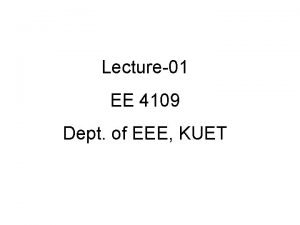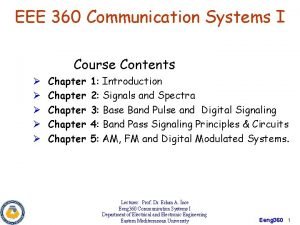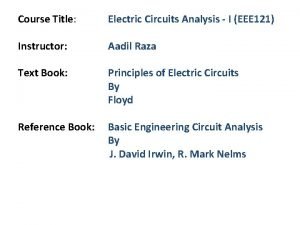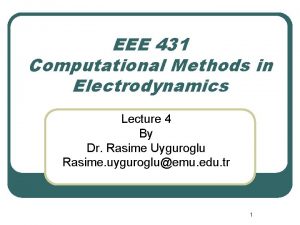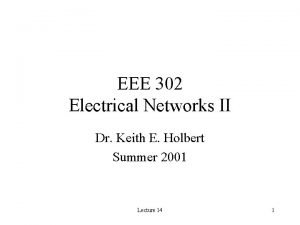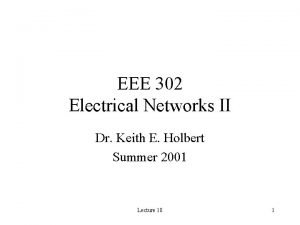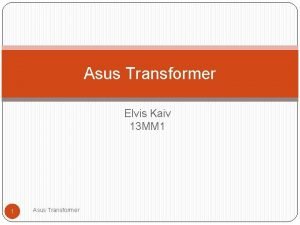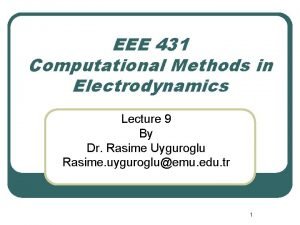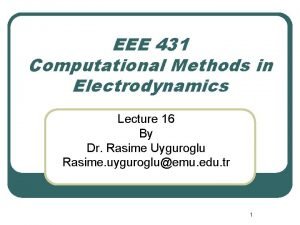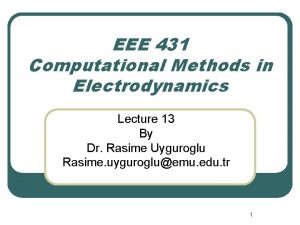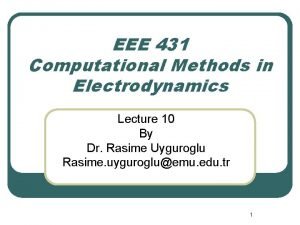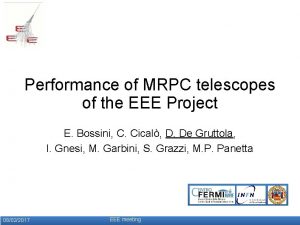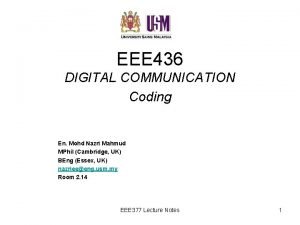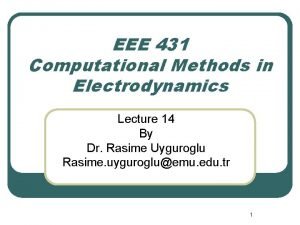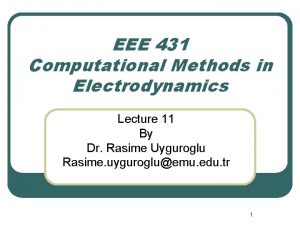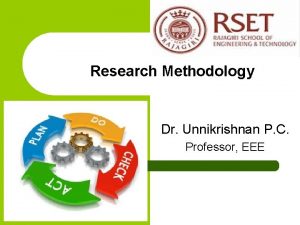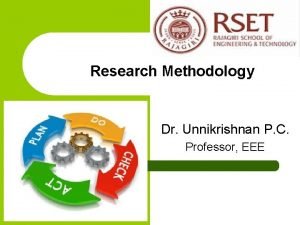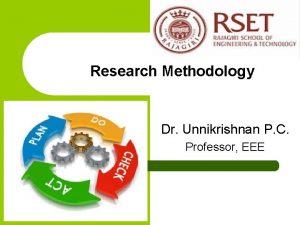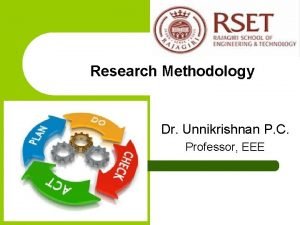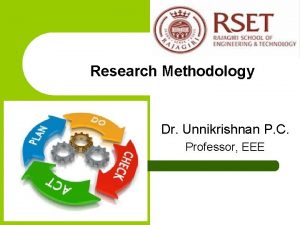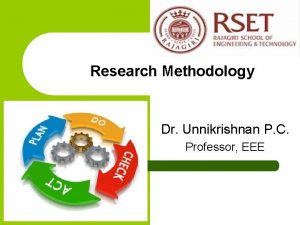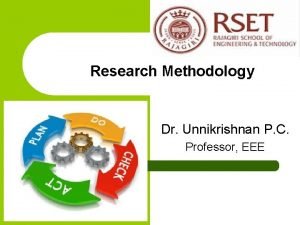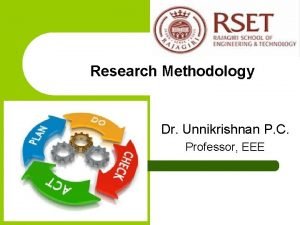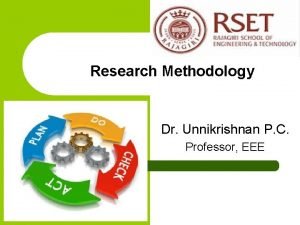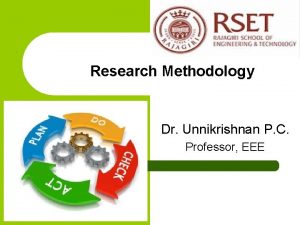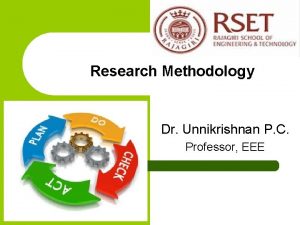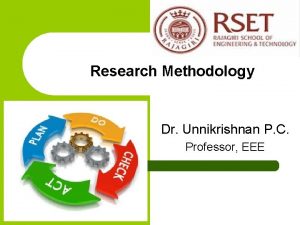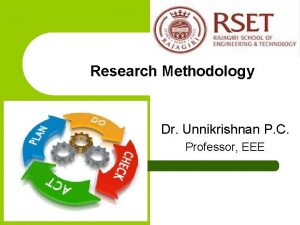Research Methodology Dr Unnikrishnan P C Professor EEE

















- Slides: 17

Research Methodology Dr. Unnikrishnan P. C. Professor, EEE

Module IV q Meaning of interpretation and inference

Research Process Step VII. Interpret and Report

VII(a). Generalizations and interpretation: • If a hypothesis is tested and upheld several times, it may be possible for the researcher to arrive at generalization • Interpretation: If the researcher had no hypothesis to start with, he might seek to explain his findings on the basis of some theory.

VII(b). Preparation of the report or thesis: • The layout of the report should be as follows: (i) the preliminary pages; (ii) the main text, and (iii) the end matter. In its preliminary pages: title and date followed by acknowledgements and foreword in report. Then table of contents followed by a list of tables and list of graphs and charts

The main text of the report: (a) Introduction: clear statement of the objective of the research, an explanation of the methodology of research and the scope of the study along with various limitations (b) Summary of findings: After introduction there would appear a statement of findings and recommendations in non-technical language. If the findings are extensive, they should be summarized.

Step 7. Interpretation of results • If a hypothesis is tested and upheld several times, it may be possible for the researcher to come to generalization, that is to build a theory. • If there is no hypothesis to start with, the researcher may try to explain his findings based on some existing theory. This is called interpretation and this may lead to further research. 7

Critical issues to be considered while interpreting data and drawing inferences from findings in survey based research 1. Are you fully powered? Statistical power is a measure of the probability that a statistical test will reject a false null hypothesis or the probability of finding a significant result when there is really one (0. 8 is ideal). Statistical power is largely determined by significance criterion(0. 05, 0. 01), effect size and sample size. 2. Are your distributions in good shape? Characteristics of the distributionnormality and independence 3. Measurement error- Psychometrically sound instrument - valid and reliable 4. Multiple comparisons. If we make enough comparisons, one or some of the results will undoubtedly will be significant (Fishing) 5. Clinical significance- real value of research finding lies in its clinical or real world significance and not in the statistical significance 8

Contd……… 6. Are there alternate explanations? - Randomization is the best way to obtain scientific control over the study and to rule out alternate explanations. Make sure that there are no systematic differences between the exptl groups or conditions, and that the only thing that varies is the independent variable that you are manipulating. 7. Are you confusing correlation with causation – Can we say cold temperature cause colds? Rock music leads to drug abuse? Eating ice-cream cause drowning? 8. How significant is your non-significance? Non-significant findings can be as important, if not more important, than significant ones. Common beliefs or expected outcomes can change with population and can’t be generalized. 9

In modelling research The results are inferred from the model on which the research is done and traced back to the real world problem with assumptions and necessary transformations. 10

In algorithmic research • This type of research give optimal or near optimal solution as per the assumed transformation of the real life problem in to a form suitable for the algorithm. This solution should be inferred in such a way that it is possible to implement it to bring about the desired results for the real life situation. 11

Step 8. Validation of results • In modelling and algorithmic research, the results after interpretation must be validated by using past data. • Validation gives credibility of the results • If there is mismatch, assumptions and modelling exercise must be revisited the results are validated • In testing hypotheses, validity is built-in in the significance level. Inferences from research can act as guidelines forming policies or bringing changes in the system for betterment. 12

Step 9. Preparation of report • Preliminary pages – Cover Page, Bonafide Certificate, Declaration, Table of Contents, List of Tables, List of Figures, List of Symbols and Abbreviations, Acknowledgement, Abstract • Main text – Introduction, Chapters • End matter – Conclusion, Scope for future work, References, List of Publications 13

Validity in research • Refers to the conceptual and scientific soundness of a research study. – Internal validity – External validity – Construct validity – Statistical conclusion validity 14

(c) Main report: The main body of the report should be presented in logical sequence and broken-down into readily identifiable sections. (d) Conclusion: results of his research should be clearly and precisely. Final summing up

• Report should be written in a concise and objective style in simple language avoiding vague expressions such as ‘it seems, ’ ‘there may be’, and the like. • Charts and illustrations in the main report should be used only if they present the information more clearly and forcibly. • Calculated ‘confidence limits’ must be mentioned and the various constraints experienced in conducting research operations may as well be stated.


